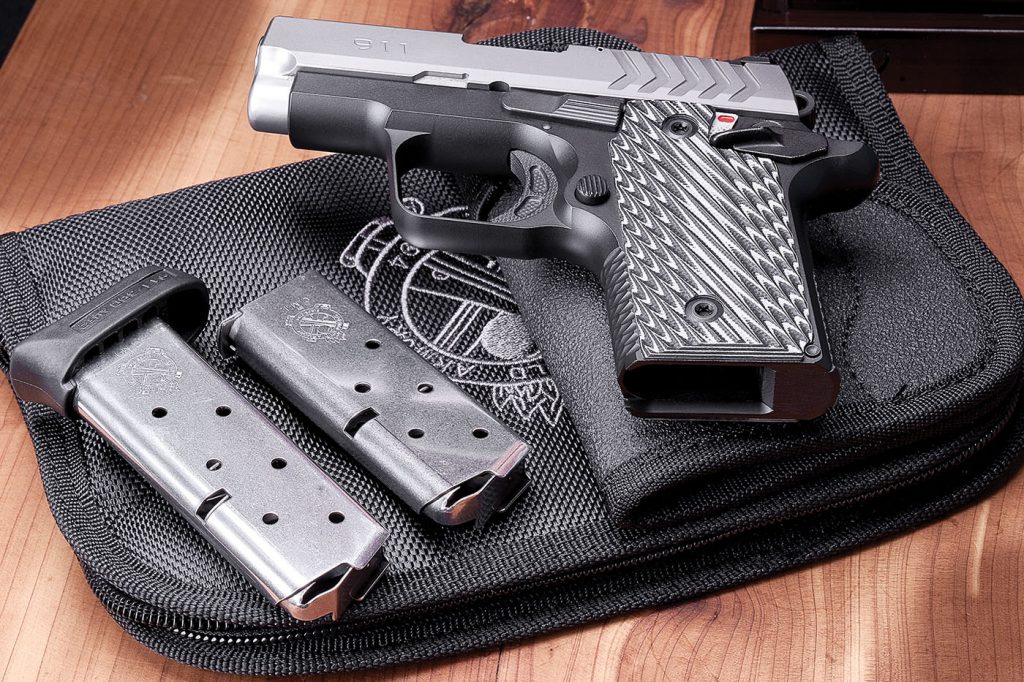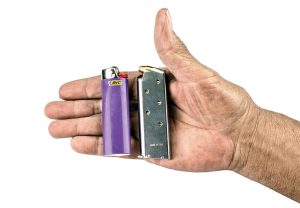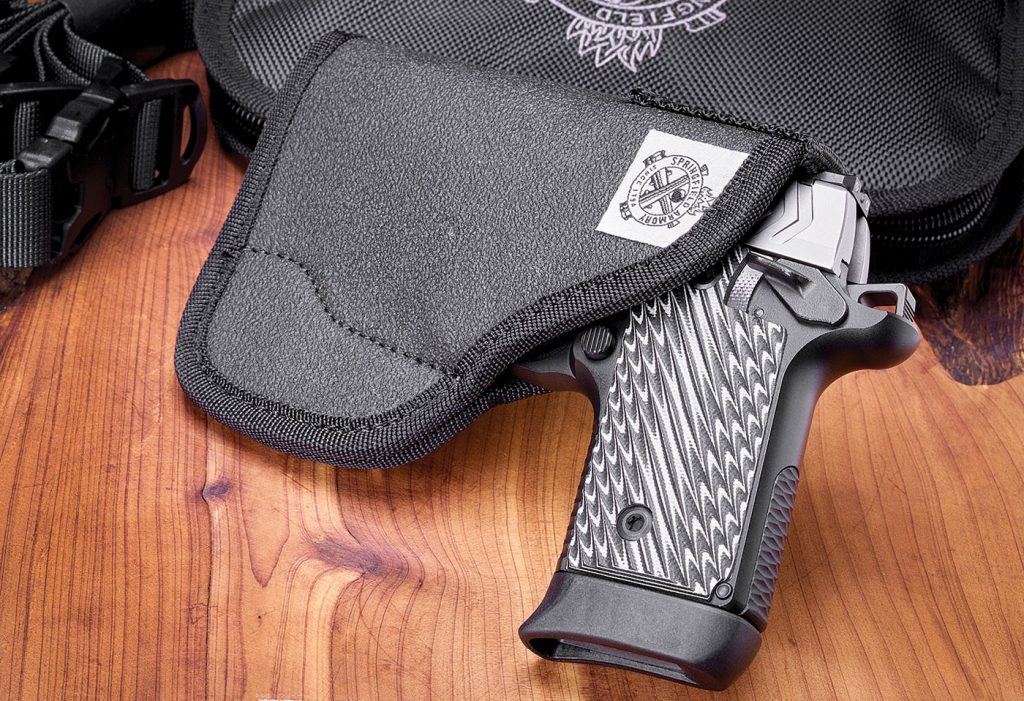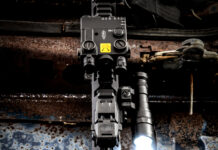Trigger Pull
Depending which expert you listen to, .380 Auto “stopping power” is either at the very bottom limit of “minimum acceptable,” or sub-par. Ability to shoot accurately is thus critical, and trigger pull characteristics are thus critical as well. Our test sample averaged 8.73 pounds, very consistently, on a Lyman digital trigger pull scale.
That’s the science part. Now, let’s talk about the human factors part. All of the testers, each of them award-winning shooters with vast trigger-pulling experience, estimated this gun’s pull weight at much less than that when they tried it! At least one estimated less than half. Personally, I’d have put it in the six-pound range.

Explanation: the short trigger reach “gets more finger onto the trigger.” This in turn gives more leverage. More leverage equals less effort to press that trigger to the point of the shot. Dry fire a Springfield Armory 911 in the gun shop and see for yourself. You’ll say, “No WAY that’s almost nine pounds.” Then put the trigger on a scale….
It’s something I’ve seen with other 1911 style pistols with very small frames, such as the Kimber Micro 9. Our test 911 .380’s trigger had a very short take-up, and gave a clean, even break for every shot.
Accuracy
Protocol: 25 yards from a solid two-hand hold on a Caldwell Matrix rest on a concrete bench. 5-shot groups measured (shows potential for experienced shooter from most solid possible position in calm conditions) and also best 3 hits, which decades have taught me will about equal the same gun/ammo performance for all five shots from a Ransom machine rest.

One major police department tried a high-tech load when they approved .380 for off duty and backup, then said the hell with it and switched to Speer Lawman .380 FMJ. That ammo in this gun gave us a dismal 6.53” group for all five shots, with the best three in 3.95”. For perspective, the “gun magazine rule of thumb” is that “4 inches at 25 yards for 5 shots is acceptable accuracy from a service pistol.” Tiny pocket guns like this one get cut a lot more slack. Unfortunately, bad guys don’t cut you slack for being farther than belly-to-belly distance when you have to return fire at them.
My preferred load when I have to carry a .380 is the Hornady XTP 90-grain, which gives more or less adequate penetration with at least some expansion. In the Springfield Armory 911, it gave me 3.80” for all five shots, with four in 2.50” and the best three in a much more pleasing 1.45”, though the group was about three inches low with post-in-notch sight picture.

Winchester’s relatively new PDX-1 95-grain hollow point, however, was the star of the show! It put all five shots into exactly 2.00” at 25 yards, and the best three in 0.40”, two of the hits connected and one in closer-than-air-kiss distance. These were, however, a little more than two and a half inches low from post in notch sight picture at point of aim.
I tried aiming with the dot of the front night sight instead of the top edge of the post in notch silhouette, which generally brings hits up higher. It did, but still not quite to point of aim/point of impact. Even at seven yards, hits were a bit low. Still, at seven yards, the 911 put a full mag of .380 ball into a bit over an inch from two-hands standing.























